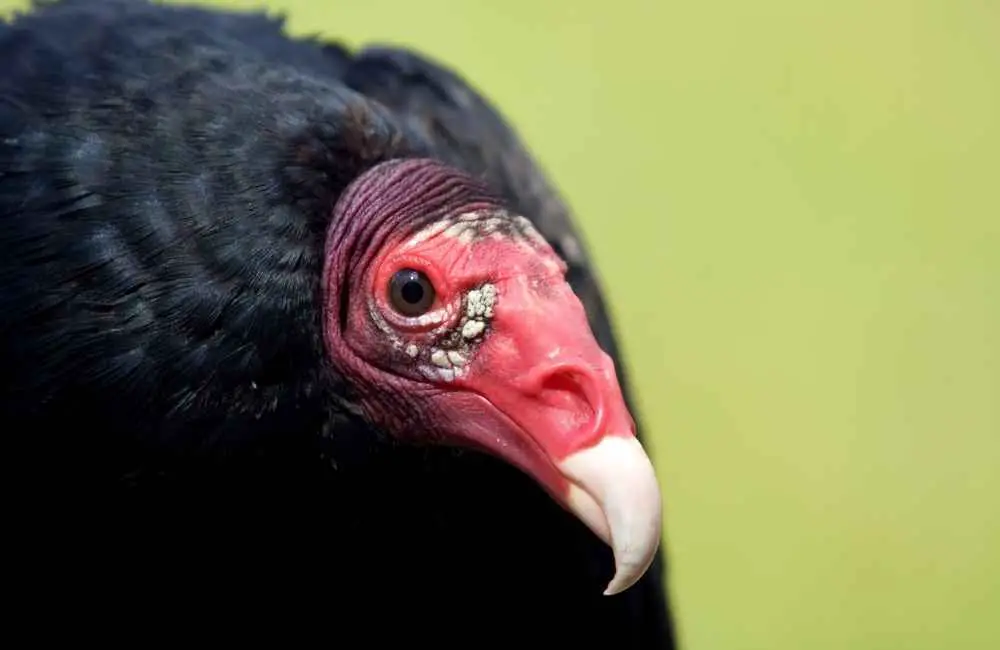What is the dirtiest animal in the world?
Table of Contents
ToggleIntroduction
Curious minds often wonder about the natural world and its peculiarities. One intriguing question that sparks interest is, ‘What is the dirtiest animal in the world?’ Let’s delve into the fascinating realm of the animal kingdom to uncover the answer and explore the factors that contribute to this unique distinction.
Dirtiest Animals in the World!
The online realm brings us heartwarming videos of charming kittens, heroic dogs, and an array of incredible animals, fostering our deep appreciation for the animal kingdom.
Despite our affection for pets, it’s essential to be wary of certain creatures due to their unclean habits, unpleasant behaviors, and overall repulsiveness.
So, what qualifies as the filthiest animal globally? Here’s a clue: it’s not the commonly perceived pig! Although pigs often bear the brunt of a reputation for being dirty, the following discussion will delve into the 27 dirtiest and most unpleasant animals globally, prompting a need for caution.
Keep reading to explore these fascinating insights.
Related Posts :
Let’s understand Why Do Cats Like Straws?
Let’s Understand Why Does My Cat Get a Red Rocket When I Pet Him? 5 Facts
Male Goats
When I ventured into goat farming, I wasn’t ready for the less-than-pleasant behaviors of a buck in rut. While female goats can be affectionate and castrated males make good pasture companions, unaltered male goats present a different challenge.
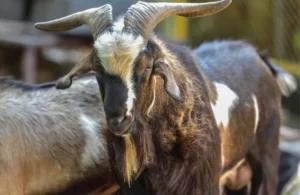
Goats might casually release gas or burp, even blowing it in your direction with their not-so-pleasant breath. However, when a male goat is interested in a female, they express it through facial expressions, peculiar sounds, and engaging in less-than-pleasant behavior.
Indeed, male goats create a unique scent by urinating on their own faces and, unfortunately, dipping their heads in the urine of other goats.
This particular behavior might be a deal-breaker for some, but it’s essential to note that intact male goats can also pose safety risks.
Hedgehogs
Hedgehogs, despite their adorable appearance, have a couple of less-than-charming habits to be mindful of.
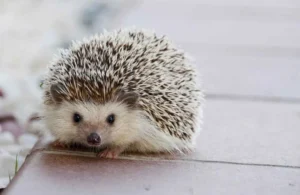
For starters, these nocturnal creatures enjoy a nightly run, leaving behind quite a bit of poop in their wake. Their busy little bodies can create more droppings than one might anticipate. Yet, the real challenge comes as they dash through their feces, resulting in those cute little toes getting quite messy.
In addition to their bathroom adventures, hedgehogs have a peculiar habit of anointing themselves with their saliva. After discovering something intriguing, they chew it up and then spit it onto their backs.
Related Posts :
Let’s understand Is Pura Safe for Cats?
Let’s understand Why Do Cats Like Straws?
Let’s Understand Why Does My Cat Get a Red Rocket When I Pet Him? 5 Facts
Although this may seem unsavory, it’s believed to be a protective measure, masking their scent from potential predators. It’s worth noting that handling a hedgehog after such anointment could lead to a prickly rash.
Lastly, if you have a solitary male hedgehog, be prepared for some behavior that might be a bit awkward, especially in the presence of young children!
Cats
While cats may seem sweet and endearing, there’s a side to them that can be a bit unappetizing, especially when they stroll through the litter box and then perch themselves on your kitchen table during dinner.

Their grooming habits might not align with human standards; instead of opting for a bath, they resort to licking their less-discussed areas and later bestowing you with kitty kisses on the nose.
Moreover, their hunting instincts can bring a touch of unpleasantness. Cats not only capture and eliminate various tiny creatures but also tend to roll around on their prey and then snuggle up with you in bed. It doesn’t get much more unsavory than that, does it?
Rabbits
Certainly, your adorable fluffy bunny brings joy, but it’s essential to acknowledge that they can exhibit some less-than-charming behaviors, particularly if they haven’t been spayed or neutered.
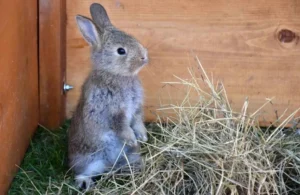
In the case of an intact male rabbit, marking territory is a common practice, often involving spraying urine on walls, floors, and even on you. The urine used for marking is exceptionally potent and challenging to eliminate.
On another note, bunnies have a peculiar dietary habit—they consume their own feces.
They produce two types of droppings: hard little pellets, left behind in their living space, and softer feces, which they eat to undergo digestion a second time.
While these behaviors may not align with typical pet cleanliness, understanding their natural tendencies is key to providing proper care.
Sloths
Indeed, sloths captivate us with their adorable bear-like faces and incredibly slow movements. However, their cuteness belies the fact that they inhabit a rather filthy and unappealing environment.
Sloths often become covered in algae to the extent that their fur can turn green.
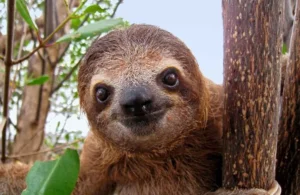
Adding to their less-than-pristine lifestyle, moths take advantage of sloth fur as a suitable location to lay eggs, and new moths hatch from the sloth’s fur and feces.
In a rather unsettling revelation, scientists have found that given the opportunity, sloths may even scoop and consume human feces directly from a latrine.
Despite their charming appearance, the habits of these creatures can be surprisingly unclean and unexpected.
Dung Beetles
Certainly, you must have come across the fascinating behavior of dung beetles rolling balls of excrement. While this is indeed accurate, their use of feces extends beyond mere rolling.

When the day turns scorching, a dung beetle takes to perch on top of its dung ball, utilizing it as a means to cool off its little feet. Furthermore, these industrious beetles roll their dung balls into nests, providing sustenance for their offspring.
In an even more intriguing twist, dung beetles not only thrive on dung but sometimes choose to reside inside it. Such a lifestyle may seem rather unsavory, presenting a unique and, perhaps, less glamorous side to their existence.
Bats
Bats play a crucial role in insect control, yet they come with a significant caveat – interacting with them can be quite repulsive and potentially harmful. It’s strongly advised to refrain from touching bats due to the risk of serious diseases they might carry.
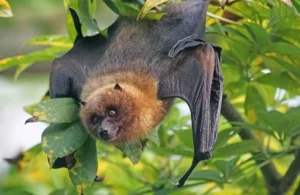
While they can transmit diseases to humans, bats themselves often remain unaffected by the pathogens they carry. Hence, steering clear of bats becomes essential if you wish to avoid diseases such as rabies, Ebola, coronaviruses, SARS, and MERS.
Furthermore, the byproduct of bats, known as guano or bat poop, poses its own set of hazards. Guano has the potential to release pathogens that lead to histoplasmosis, a condition that can be particularly severe for individuals with weakened immune systems.
Hence, caution is urged when dealing with these seemingly beneficial yet potentially hazardous creatures.
Related Posts :
Let’s understand Is Pura Safe for Cats?
Let’s understand Why Do Cats Like Straws?
Let’s Understand Why Does My Cat Get a Red Rocket When I Pet Him? 5 Facts
The African Hoopoe Bird
The African Hoopoe, a vibrant and striking bird spread across Africa, is renowned for its vivid plumage and distinctive crown of feathers adorning its head.
However, beneath its visually appealing exterior lies a rather unappealing trait – it possesses a peculiar and quite unpleasant odor.
This bird possesses a gland on its rear end that produces a highly offensive substance, emitting an odor reminiscent of rotting flesh.
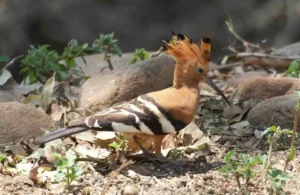
Surprisingly, the Hoopoe purposefully douses itself in this malodorous liquid, using it as a defense mechanism against parasites and functioning like an antibacterial soap.
Interestingly, baby Hoopoes take a different approach to self-defense by squirting their feces at predators, creating a potent stink as a protective measure.
Despite its charming appearance, the African Hoopoe’s habits reveal a somewhat unconventional and, at times, less than pleasant side.
Turkey Vultures
Turkey Vultures don distinctive bald heads not as a fashion statement, but as a practical measure to avoid their meals – carrion or dead meat – adhering to their feathers.
Despite being scavengers without the ability to kill, their keen sense of smell enables them to detect a deceased animal from a considerable distance of one mile!
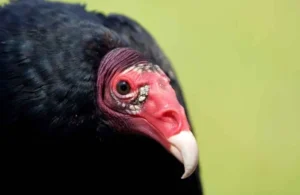
While these birds don’t face many natural predators, they do possess a small defense mechanism. When confronted with a threat, a turkey vulture employs a unique tactic – it regurgitates its recent meal. The offensive odor accompanying this action serves as an effective deterrent against potential predators.
Interestingly, despite their name, turkey vultures are not actual vultures but share familial ties with storks. This underlines the importance of understanding the distinctive features and behaviors of these intriguing carrion-eating birds.
Vultures
Vultures, nature’s street cleaners, play a crucial role in consuming leftover decomposed meat and flesh that other predators have left behind.
However, the somewhat unsavory aspect of their behavior comes to light during hot summer days.
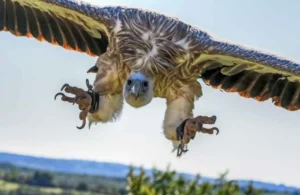
Lacking the ability to sweat for cooling, vultures resort to an unusual method – they shower off with their own urine to beat the heat.
While their scavenging habits contribute to ecosystem cleanliness, this particular cooling mechanism may strike some as a less-than-appetizing adaptation to soaring temperatures.
Hagfish
Hagfish, eerie denizens of the underwater realm, exhibit a toothless and nearly blind existence. When encountering a sea-bottom corpse, these peculiar creatures employ a unique approach – they enter through any available opening and consume the cadaver from the inside out.
Despite their somewhat macabre feeding habits, hagfish possess a singular defense mechanism: copious amounts of slime.
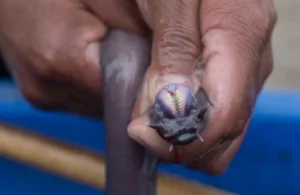
In reality, it’s mucus, and they can produce up to 17 pints of this viscous substance to expel in the direction of potential threats.
This distinctive adaptation showcases the hagfish’s ability to navigate the ocean depths with a combination of unconventional feeding strategies and a slippery defense mechanism.
Botfly
A botfly, though it may outwardly resemble a harmless and fuzzy bee, harbors a more ominous nature than a simple sting. This parasitic insect requires a mammal as a host, depositing its eggs onto the host’s skin.
The eggs then burrow into the skin of the unsuspecting animal, creating a lump with a breathing tube for the larvae upon hatching.
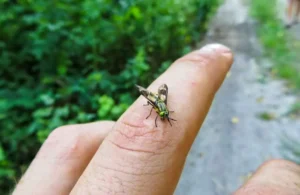
Subsequently, the larvae falls out of the skin, undergoes molting, and transforms into a mature botfly.
While the majority of botfly species typically target animals, a specific species in South America exhibits a rather unsettling preference for humans as their chosen hosts.
This distinctive behavior underscores the intriguing yet somewhat disconcerting aspects of certain insect species’ interactions with their hosts.
Jackals
Jackals, appearing as larger and somewhat charming counterparts to foxes, possess a rather unappealing side. These wild scavengers play a crucial role in consuming any remnants left behind by predators, including old carcasses, decaying flesh, and diseased remains.
In a somewhat unconventional parenting approach, jackals exhibit a unique feeding behavior for their pups.
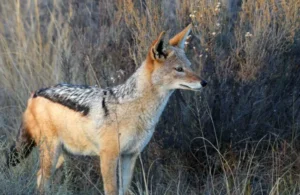
To provide nourishment for their offspring, they are known to regurgitate their last meal, essentially creating a specialized baby-jackal food.
In an even more surprising turn, if their little pups are unable to consume it all, the jackals will readily ingest the regurgitated meal back for dessert. This distinct behavior highlights the intricate and, at times, less glamorous aspects of wildlife parenting strategies in the animal kingdom.
Related Posts :
Let’s understand Is Pura Safe for Cats?
Let’s understand Why Do Cats Like Straws?
Let’s Understand Why Does My Cat Get a Red Rocket When I Pet Him? 5 Facts
Scorpions
Scorpions are renowned for their formidable defense mechanism – the menacing stingers that arch over their backs. These stingers can become embedded in their adversaries and detach as the scorpion executes its getaway.
Yet, the abandoned stinger persists in delivering venom to the foe, enhancing the scorpion’s escape strategy. As if this weren’t deterrent enough, the narrative takes a more intriguing turn.
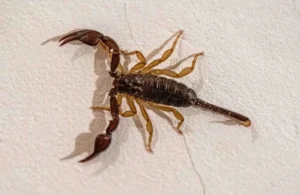
When a scorpion’s tail is detached, it doesn’t regenerate, and the removal also takes the scorpion’s anus along with it. Consequently, the scorpion faces a rather unfortunate consequence – an inability to defecate.
Fecal matter accumulates inside the scorpion until the pressure builds to a critical point, leading to the scorpion’s eventual demise through an explosive outcome.
This peculiar aspect of scorpion anatomy showcases the intricate and sometimes peculiar consequences of their defensive adaptations.
Snapping Turtles
Snapping turtles, often cautioned against for their potential harm, harbor a darker and more disturbing side that is not widely known. In India, where the Ganges River is utilized as a resting place for departed loved ones, a consequential issue arises.
The substantial presence of corpses in the river not only poses health risks for the local population but also inflicts emotional trauma.

To address this challenge, an unconventional solution has emerged – thousands of snapping turtles have been trained to consume human flesh.
With a staggering 24,000 turtles released into the river, their insatiable appetite for flesh leads them to drag bodies from the banks to partake in their macabre feast.
This practice, though aimed at mitigating a complex problem, unveils a disquieting aspect of the interaction between wildlife and human practices.
Male Bees
Male bees employ a rather unsettling strategy to secure the continuity of their family line. During mating, a male bee’s genitalia undergoes an explosive event inside the queen bee.
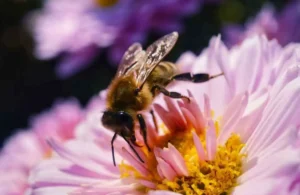
This unique mechanism effectively acts as a plug, preventing other bees from mating with the queen.
This reproductive strategy, though intriguing in its evolutionary adaptation, unfolds as a somewhat macabre aspect of the intricate mating behaviors observed in the insect kingdom.
Hippos
While Shirley Temple may have wished for a hippopotamus for Christmas, our perception of these creatures has evolved to recognize their fierce and intimidating nature.
Surprisingly, hippos showcase a level of intelligence as they devise a form of natural sunscreen using mud to shield their skin from the harsh sun.
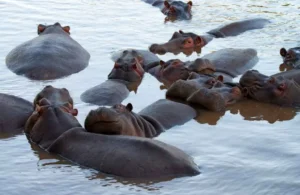
Intriguingly, hippos take it a step further by creating their own mud, composed of a unique blend of feces and urine. This concoction serves a dual purpose – not only as a protective barrier against the sun but also as a territorial marker.
The multifaceted behaviors of hippos highlight the complex and adaptive nature of these remarkable animals in their natural habitats.
Koala Bears
While koala bears captivate with their cuteness, clinging to trees with their big eyes and innocent faces, these creatures harbor some rather unappealing secrets.
Baby koalas, in an unusual twist, rely on a peculiar method to boost their immune systems – they consume their parent’s feces.
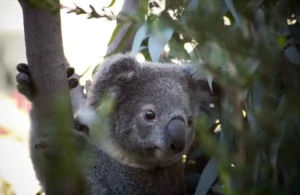
This unorthodox feeding approach adds a surprising and somewhat gross element to their nurturing.
Furthermore, a less endearing aspect emerges as 40% of koalas placed in animal sanctuaries are found to be infected with the sexually transmitted disease, chlamydia.
This infection, transferable through their urine, introduces a less glamorous side to the health challenges faced by these iconic Australian marsupials.
Sea Cucumbers
Despite being often considered the jesters of the underwater realm, sea cucumbers possess a rather formidable defense mechanism that demands respect.
When confronted with danger, a sea cucumber has the ability to expel its internal organs in a surprising act known as evisceration.

This can occur from either the front or back end, leaving its guts behind as a distraction for predators while the sea cucumber swiftly escapes.
Remarkably, sea cucumbers exhibit regenerative capabilities, allowing them to gradually regrow their lost organs over time. This fascinating adaptation showcases the resilience of these seemingly unassuming creatures in the face of threats.
White-Tailed Deer
While the sight of a gentle deer in the woods may evoke feelings of innocence, there’s a surprising and somewhat unsettling aspect to their behavior.
When faced with food scarcity during the harsh winter months, these seemingly herbivorous creatures can adopt a carnivorous diet, feasting on fellow deer, deceased rabbits, birds, and even fish.
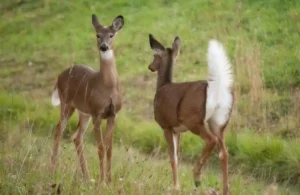
In an unexpected and macabre incident in 2015, a deer was documented consuming a human corpse, challenging the perception of their innocence.
The multifaceted dietary habits of deer reveal a survival instinct that goes beyond their conventional herbivorous image.
Related Posts :
Let’s understand Is Pura Safe for Cats?
Let’s understand Why Do Cats Like Straws?
Let’s Understand Why Does My Cat Get a Red Rocket When I Pet Him? 5 Facts
Bombardier Beetle
While many beetle species pose no threat to humans, the bombardier beetle stands out as both dirty and perilous. This formidable insect possesses two distinct glands that produce separate chemicals.
When threatened, the bombardier beetle releases both chemicals simultaneously, creating a potent mixture that it expels as a defensive mechanism.
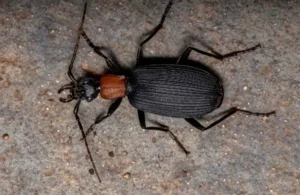
The ensuing chemical reaction can reach temperatures as high as 212 degrees Fahrenheit, posing a risk of burning human skin.
The bombardier beetle’s ability to deploy this fiery defense adds a level of danger to its seemingly unassuming appearance.
Horned Lizards
Despite their small size, horned lizards employ a rather dirty and unconventional defense mechanism.
In a bid to protect themselves, these lizards have a unique ability to shoot blood.
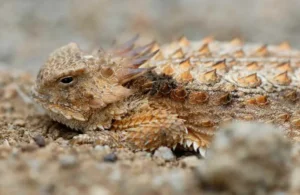
The lizard stores blood in sacs located below its eyes, and when these sacs are full, it can expel its own blood as a defense mechanism.
This blood-squirting technique allows the lizard to project blood up to six feet, deterring predators with the gross and unexpected tactic and providing the lizard an opportunity to escape unharmed.
Narrow-Mouthed Frog
While frogs are generally perceived as harmless amphibians, the narrow-mouthed frog, in particular, has quite a disgusting habitat.
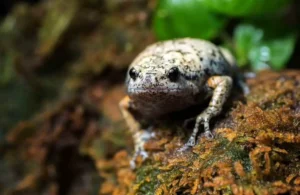
This small frog chooses to reside in elephant dung, which serves not only as a comfortable home but also as a rich source of bugs and leftover food that the elephant didn’t fully digest.
The narrow-mouthed frog engages in a rather gross lifestyle, as it not only lives in but also eats, sleeps, and breathes within elephant poop.
Flamingos
While watching flamingoes gracefully balance on one foot at the zoo can be amusing, it’s important to note that these elegant birds have a rather gross way of cooling off.
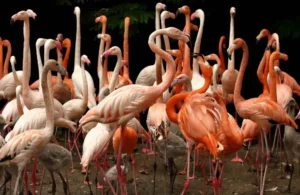
Flamingos, like storks and vultures, lack the ability to sweat.
To cope with the heat, they engage in a process called urohidrosis, which is essentially peeing on their own feet. Instead of sweating, these birds urinate down their legs as a means to cool off under the hot sun.
Flies
While houseflies can undoubtedly be a nuisance, there’s more to these common insects than just their annoying buzzing.
It’s essential to understand how truly filthy and disgusting they are. Flies are drawn to strongly scented waste, such as trash and dog feces.
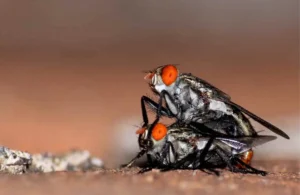
After picking up a host of bacteria from these unsanitary locations, they may land on your food, regurgitating their digestive juices directly onto your meal.
Not the most appetizing scenario, is it? Furthermore, flies have a particular affinity for dead flesh, using it as a nesting site for their eggs, which promptly hatch into maggots.
Frequently Asked Questions :
Q: Are the animals discussed in the content considered the most dirtiest animals?
A: The term “most dirtiest animals” is subjective, as cleanliness standards vary. The content highlights behaviors that some may find unpleasant, but it’s essential to consider the ecological roles these animals play.
Q: Do all animals exhibit behaviors mentioned in the content?
A: No, not all animals display the discussed behaviors. The content covers specific instances observed in certain species, and behaviors can vary widely across different animal groups.
Q: Should the habits of these animals be a cause for concern?
A: While some behaviors may seem unappealing, they are often natural adaptations that serve essential purposes for the animals. Understanding these behaviors can provide insights into their ecological roles.
Q: Can human interactions with these animals be risky due to their habits?
A: In general, human interactions with these animals are not typically risky. However, caution is advised, as some behaviors, like those of scorpions or bats, may carry potential health risks.
Q: Are there any positive aspects to the behaviors of the animals labeled as the most dirtiest?
A: Many behaviors discussed in the content, though labeled as “dirty,” serve important ecological functions for the animals involved. These behaviors often contribute to their survival, reproduction, or overall well-being in their natural environments.

